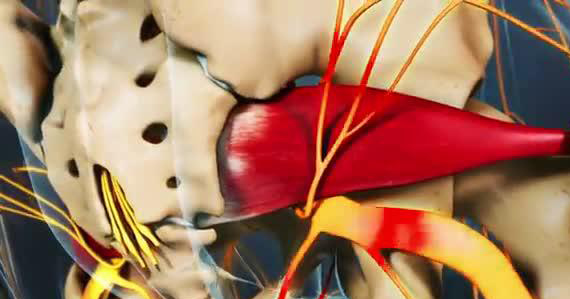Piriformis Syndrome
The piriformis muscle is located in the buttocks region, and runs from the outer hip area to the sacrum at the base of the spine. It functions to externally rotate the leg, and as the picture above indicates, the sciatic nerve runs through/under it. It makes sense that problems with this muscle can put pressure on the sciatic nerve and cause pain in the buttocks and down the leg.
Causes of piriformis syndrome may include: hyperlordosis (excessive curve of the lower spine); muscle anomalies with inflammation; fibrosis (due to trauma); anatomical abnormalities; vigorous physical activity; foot, knee, or hip problems. Often, piriformis syndrome is difficult to distinguish from low back problems, and they frequently occur together. Deep palpation of the piriformis muscle will cause pain in piriformis syndrome, and not in problems with the low back.

Treatment of piriformis syndrome involves stretching out the piriformis and other hip girdle musculature. Although painful, deep massage of the muscle often helps break up adhesions and scar tissue which may have built up. Ultrasound therapy also helps in this regard. Manipulation of the lumbar spine and sacroiliac joints will be useful to increase motion in the surrounding joints. Dysfunctions of the lower extremity must be addressed to fully correct the problem. Rehabilitation exercises will focus on stabilization of the core muscles of the abdomen and pelvis.
